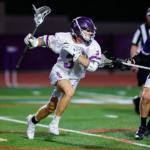
As the years go by, and the candles add to the cake, reflecting on my life has been a journey I never saw coming. I am 5’4″ on a great day; I can say my greatest battle is between school, basketball, and my body due to having Ankylosing Spondylitis. As I type this, Microsoft word fails to realize that AS is spelled correctly. Most people have no clue what this is or what the symptoms are. My goal in life is to take this new found barrier within my body, and make it an advantage in my day to day life. I hope to make a contribution to assisting research or finding some way to make a difference in it in further educating people about it. However, for now, I’ll just start by telling my own story.
Senior year is beginning, individuals are determining the schools they wish to attend and the path they wish to take for their lives. It is extreme to say so far has been a journey; the humorous part is, I am still young and have yet to begin to scratch away the surface of my goals. Freshmen year, high school seemed to be a new experience on its own; on the other hand, I began to see my body changing. Not in the normal becoming a woman state; from a far distance, I looked as if to have muscle definition, the good kind I was getting stronger. At a close distance, one began to see I had a dent in simplest way to put it. Frustrated with the questing of my peers, and lacerating feelings, I saw the doctor, who recommended me to a specialist for rheumatology. The rheumatologist then diagnosed me with Localized Scleroderma. Seeing the rheumatologist at Valley Children’s Hospital was finally someone who could answer my questions about my body. Why there was a dent in my arm, and how it wasn’t caused by a basketball incident. After being prescribed a medication that wasn’t too much of a problem, my Localized Scleroderma began to no longer be visible, a positive sign. My Methotrexate dosages were lowered and then I began to face bigger issues.
Mornings, every teenager hates them; the difference for my sophomore year was while my classmates were able to go to school, I faced painful aches in my back. I had no way to tell if I became sore from sports, if I had injured myself or if it was rather more serious. I noticed that I was sorer than anyone on my basketball team. I was sore and my back just felt awful. Cold temperatures bothered me more than before; my favorite season became my least favorite. I thought it was maybe because of practice the night before or new workout sessions with our school trainer. I began to figure out that it wasn’t associated with any injury from a game, or practice. It became worse when I did not practice or slummed around on my day off from my sports. When seeing the doctor, they believed it was muscle related, so they told me to take days off of sports and to rest. This only made the case worse; I thought, “How could my pain be getting worse when I haven’t moved anywhere?” I did not complain so much, because I just wanted to get back to practicing again, but my parents noticed how I was moving and having a harder time in the morning and not getting much sleep at night. After this pain lasting in spurts continually I went to the doctor; my doctor again recommended me to the rheumatologist.
Dr. Arce-Hernandez examined me within the room, and then had me get a blood test and M.R.I. done. Results came back and I finally knew the answer, Ankylosing Spondylitis. Ankylosing Spondylitis: a form of arthritis in the lower portion of your back within the joints. Capsulizing my daily routine of my week would be: Take a hot shower. Apply Tiger balm. Take vitamins and medication. Drink protein shake. Arthritis has no cure, but is common with aging; however, juvenile arthritis is less common. With this disability it has impacted my attendance at school, and extracurricular activities. I have days where I experience a flare-up, a flare-up for me is where I have unbearable aches in my lower back that keep me in bed. These handcuffing times can last for three days straight on a bad week, on a good week I can be mobile for six days. Ways to manage these flare-ups are shots, medication, heating patches, tiger balm and numerous hot showers.
The most apparent positive outcomes of the situation are my character and work ethic that have developed. Determining ways to achieve success through cleverness, establishing different methods, in order to meet achievements in school, or in basketball. Whereas a person’s advantage might be being tall, I used speed to beat them instead. I cherished my competitive drive, it sustained and didn’t lack with being diagnosed with juvenile arthritis. My competitiveness leads to my determination to not settle for just succeeding in one thing, but to strive for a further step. Personally, growing up I would take care of my work ahead of time, this came in handy; by being dependable, with my disability, I am still able to participate in group projects and extracurricular activities. I make sure to always pull my own weight, and help others around me with their own obstacles. I now have a 504 plan which allows me to communicate with my teachers on what I may need during class, like a heating pad or leaving the classroom when the temperature is uncomfortable. This plan allows me to make up any work and continue to attend classes without going on independent studies. The plan has saved me from facing depression in some sorts with no longer being able to see my friends as often and allowing my participation in extracurricular activities. I am capable of keeping up with the work load while facing many absences and tardies due to my disabilities.
Negative setbacks I experience are, being confined to my room, medication side effects and not being able to do some of the workouts my teammates participate in. In my personality I am rather stubborn about asking for help, I choose to figure things out by myself. While being unable to move and having to ask my family to bring me things has an emotional drain on me. Basketball became harder to attend, but without exercise, the doctor explained, my spine would begin to fuse and worsen my case (exercise keeps the joints fluid and prevents stiffness enabling fusion). If I practiced the day before a flareup, then it could make the pain less intense and shorter possibly. It can be seen as a struggle, but facing struggles can make a person out for the better. However by still grounding my grades and evolving exercise routines, the battle against arthritis is a great accomplishment; countering the negative impact it proceeds to have.
Currently I am still taking Methotrexate, and have been given other types of pain medication to help manage my flare ups; recently I am trying Humira. I find Humira to be easier to do, because it is once every two weeks opposed to Enbrel which I was doing every week. I am now on a gluten-free diet in hope to help cut down long flare up days and to assist with more energy and weight management for when I get sick from having a low immune system from the shots. This little known disease has become more known where I live; more girls are becoming diagnosed with it in teen years.
Learning from this obstacle in my life, I gained or revealed the characteristics within to pursue and maintain the life I have. I have looked around and seen my support system of teammates, classmates, teachers, and family build together with me. Prior to becoming a juvenile-arthritis-patient at Valley Children’s Hospital, I was uneducated on the effects of arthritis and who the disease can take a toll on. I developed an understanding that people can overcome obstacles in their life, whether the obstacle is physical, emotional or spiritual. Weathering this obstacle that I am still facing has taught me that it is alright to ask for help and it is more than alright to help those who are too stubborn to ask for assistance.



